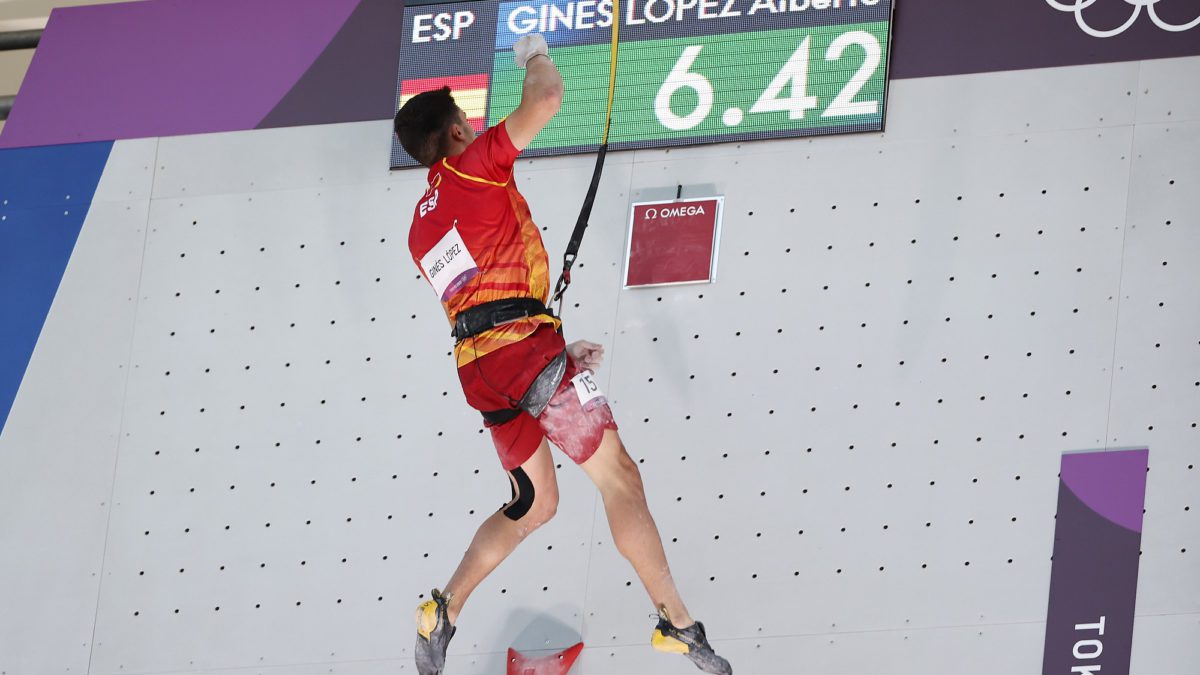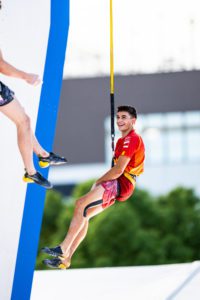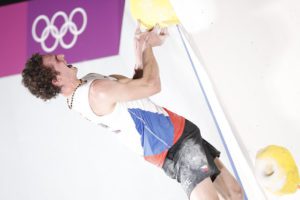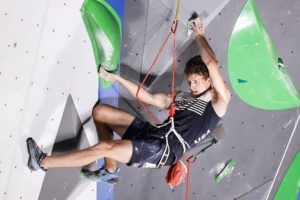Spain Wins Gold Against Impossible Odds
Massive upset in Tokyo Olympics knocks Tomoa Narasaki and Adam Ondra off the podium. Spain's Alberto Ginés López wins.

Sport Climbing’s Olympic debut concluded in the most unpredictable result competitive climbing has seen all year. Not only did favourites Adam Ondra and Tomoa Narasaki miss the podium, Spaniard Alberto Ginés López would defy the odds to take gold.

In the beginning of this competition, media outlets would profess the unpredictable nature of the combined discipline. This, they would say, made for an exciting event with an uncertain outcome. Still, it seemed that at least one of the three favourites would find themselves with gold. This was not the case.
Although many did predict Jakob Schubert to win bronze, no one thought Alberto Ginés López would win. Although the athlete spent 2021 running the World Cup circuit in an effort to become masterful in competition, his strength level simply pales in comparison to some of the other athletes. Still, competition climbing, especially in the combined format, tests much more than strength. It tests consistency. Ginés López has that in spades.
The competition began with Speed. While an entire Speed analysis will be required to fully understand the competition, in this piece the focus will centre on the events of the day. To begin, 2,000,000 people tuned into watch the Men’s Sport Climbing Final. This alone has never occurred for climbing. Although some competitions do eventually reach 1,000,000 views on YouTube, 2,000,000 people in a live stream is almost unimaginable.
To the climbers’ credit, they put on a spectacular show. Similarly, the route setters, led by Percy Bishton, also put on a strong performance. The hot conditions of this last week would have made both working and climbing challenging and at times frustrating. Those involved worked toward a high-quality product. They displayed climbing in a spectacular light.

Speed
One of the most interesting aspects of Sport Climbing certainly came down to this morning’s Speed event. To begin, Ondra would climb against nobody as Bassa Mawem hurt himself in Qualifiers. The injury would take the French Speed specialist out of contention, however, he would place-hold in the round as a DNS (did not start) athlete. This would give Ondra an edge on the rest of the competition.
This frustrated the spectators due to the fact that Speed is Ondra’s worse discipline it gave him a buy-in to fourth for Speed, a position he likely would not have attained if Bassa competed. Still, the competition persisted.
After Ondra’s run against nobody, American Nathaniel Coleman would race France’s Mickael Mawem. In Finals the rules for winning in Speed change. The matches become head-to-head and not based around best time. This differs from Qualifiers. Coleman would lose to Mawem although the American would still post his personal best.
The event would eventually proceed until Duffy found himself competing against Spanish Olympian Alberto Ginés López. Duffy would false start, propelling Ginés López to the next round. Tomoa Narasaki had dominated his Speed rounds and looked on track to win against the Spaniard; however, he slipped and ultimately lost. By not slipping, Ginés López defeated two climbers who normally would have beaten him in Speed. As such, the Spanish climber won the event. Narasaki took second, Mawem took third, Ondra fourth, Duffy fifth, Coleman sixth, and Schubert seventh.

Boulder
Like speed, the rules for Boulder changed between the Qualifier and the Finals. Instead of a hard five minutes per boulder problem, each athlete received four minutes. Instead of four boulder problems, there would be three.
The first problem featured yellow grips on a slab that pushed athletes to the right right before standing into a one-two pseudo jump for the finish. Duffy, Coleman, Narasaki, Mawem, and Schubert would flash. Ondra would climb it second go. Ginés López would flash to Zone but would not move to the top. This created a multi-way tie. The first boulder definitely appeared too easy considering how few problems exist in the Olympic Final format.
The second problem, B2, featured a box walk before a large jump to a suspended volume. On that volume, a blue sloping edge provide something to hold the original swing, but nothing to hold the back swing. On the back swing, climbers would have to campus to a left-hand hold before building their feet up.
Athletes then entered the second part of the boulder which featured a left hand dead-point coordinated with a toe-hook catch. Every athlete would achieve zone except for Ondra. Coleman became the only climber to send the problem. This gave him a huge lead over the competition.
The final problem revolved around screw-ons building up and out a rotation of long triangular volumes. Athletes would crimp the sloping gibs in their pursuit of the finish. While Zone seemed relatively easy to achieve, the Top appeared cryptic and no athlete made it past the Zone. Conversely, all athletes made it to the Zone, thus giving Coleman the win.
This win for Coleman brought the top four’s combined scores within a single point of one another. Coleman, Narasaki, and Mawem each had six points while Ginés López had seven going into Lead.

Lead
Although separation could have been better in the Men’s Boulder event, the route setters provided a perfect Lead route for Finals. The powerful, visually appealing masterpiece forced athletes up, down, left and right over the course of the route.
Due to his poor Qualification result in Lead, Narasaki would enter the field first. He climbed through the early jumps, drop downs, pocket dead-points and foot first movements. After achieving 33 holds, Narasaki’s concentration broke and he fumbled the 34 hold falling low.
This would ultimately hold him back as Coleman climbed just past him to hold 34. Mawem would fall low while the rest of the field climbed higher. Ondra would move well on the wall establishing a high point near the top of the wall.
Ginés López would move through the bottom section, but still fell several holds beneath American Colin Duffy. Duffy fumbled with a foot and fell potentially lower than he might have given a different situation. The star of the Lead round would become Jakob Schubert.
After Schubert’s hail-mary Qualification run in Lead, many expected him to perform well on this route. The question became: How well? If he made it past Ondra, Ginés López would win, however, if he fell before Ondra, but after Ginés López, then Ondra would win. Schubert, sticking to his strengths moved all the way through to finish the route.
This would secure bronze for the Austrian, silver for Coleman, and gold for Alberto Ginés López. The nail-biting round of competition finally concluded. The results are staggering.

Combined Results:
1 – Alberto Ginés Lopéz (ESP) 28.00
2 – Nathaniel Coleman (USA) 30.00
3 – Jakob Schubert (AUT) 35.00
4 – Tomoa Narasaki (JPN) 36.00
5 – Mickael Mawem (FRA) 42.00
6 – Adam Ondra (CZE) 48.00
7 – Colin Duffy (USA) 60.00
8 – Bassa Mawem (FRA) DNS
Tomorrow will see the Women’s Final beginning at 4:30 am EST. It will be interesting to see if a similar upset occurs.


